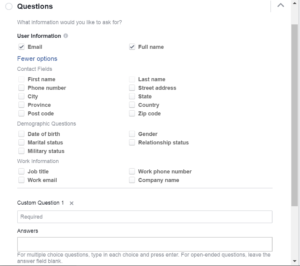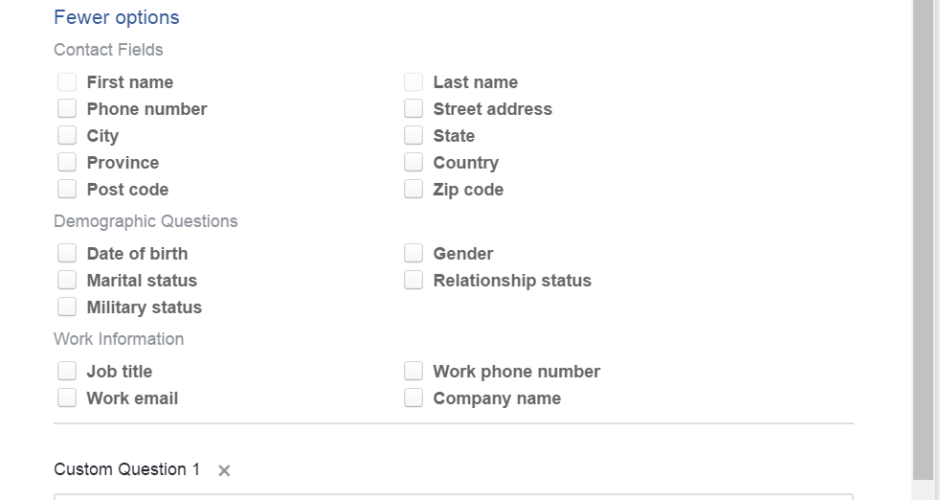There are many different components to a Facebook Lead Ad: the initial ad creative a user sees in their Newsfeed; the Welcome Screen they first see when they click the ad; the lead form itself; and the confirmation screen. And each of these screens has a number of interchangeable, customizable pieces and features. It’s a lot to test! We find that it’s best to break things down piece by piece and optimize one at a time.
The Facebook Lead Form is one of the places it’s easy to get off track. The Facebook Lead Form makes more than 20 questions available to ask, plus a custom field to enter your own. So before you even look at the Facebook Lead Form creator, write down the information you need from customers. Then, take a long, hard look and determine what you really need, and what you want.
There’s a lot of data that would be nice to have, but the only true essential is probably email address. First name might also be helpful, but it’s only worth it if you personalize emails. Do you need zip code? Maybe, but you can target certain areas to ensure you’re hitting the right neighborhoods anyway, and segment your campaigns if you need to keep areas separate.
The goal of your Facebook Lead Ad is to generate leads. So while it may seem counterintuitive to ask fewer questions, the less time it takes and the less intrusive it feels, the more likely users are to submit. Even if you’ve primed your audience with previous branding ads and turned them into warm leads, they still don’t really know you. So why should they give up all their personal information?
You’ve got to earn their trust (and their business) first. Stick to the absolute essentials from the list below and take advantage of Facebook’s extensive targeting capabilities for the rest. With the exception of name, email and phone number you can get nearly everything else through ad targeting. Mix and match geographic location with demographic data to target the customer profile you want. Then use the Facebook Lead Form to fill in the blanks with the user’s unique contact information.
Tempted by the custom question field? Don’t be. Facebook Lead Form optimization is all about simplicity. Even if you select multiple questions from Facebook’s list, the bulk of that information is expected by the user and often pre-filled by Facebook, keeping user workload relatively light. When you start asking for their favorite color or pet’s name, you snap them out of their comfort zone and make the user question why they are giving you any of their information. Stick to questions any online shopper is used to filling out for maximum lead completion.

